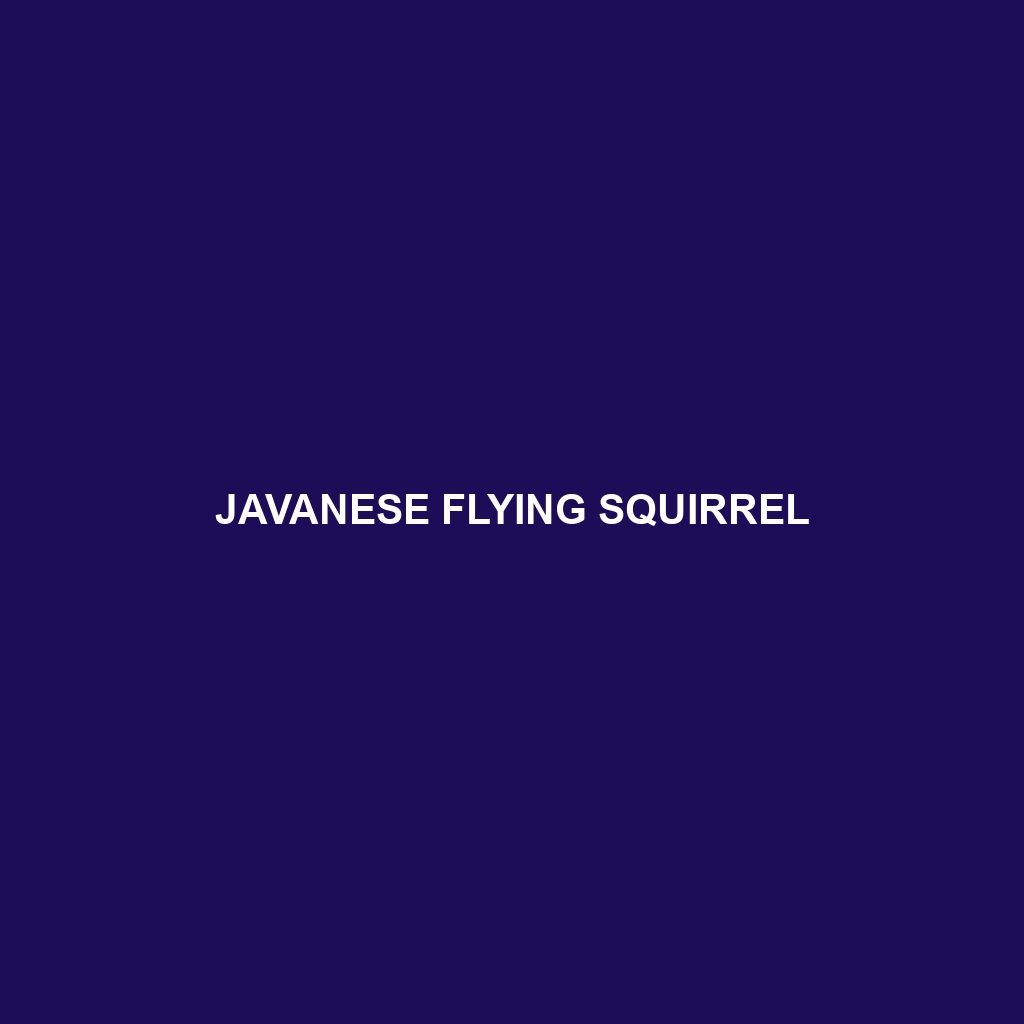Common Name: Javanese Flying Squirrel
Scientific Name: Petauroglaucomys woosnami
Habitat:
The Javanese Flying Squirrel is primarily found in the dense montane and lowland forests of the island of Java, Indonesia. They thrive in both primary and secondary forests, favoring areas with plenty of tree cover. These habitats offer the necessary structure and resources for their gliding and arboreal lifestyle, which is crucial for their survival.
Physical Characteristics:
Javanese Flying Squirrels are medium-sized rodents, typically weighing between 1.5 to 2.5 kg (3.3 to 5.5 lbs). They feature a unique body shape with large, flaps of skin that extend from their forelimbs to their hindlimbs, allowing them to glide gracefully between trees. Their fur is soft and dense, varying in color from light brown to rich gray with a slightly lighter underside. Notable features include large, expressive eyes and bushy tails, which aid in balance during their aerial maneuvers.
Behavior:
This species is primarily nocturnal, becoming active around dusk. Javanese Flying Squirrels are known for their gliding abilities, which they utilize to travel distances of up to 150 meters (490 feet) between trees. They are social animals, often seen gliding in pairs or small groups, and communicate through a variety of vocalizations. Their agility and adaptability make them fascinating subjects for wildlife enthusiasts and researchers alike.
Diet:
The diet of the Javanese Flying Squirrel primarily consists of fruits, nuts, and tree sap. They are also known to consume leaves and flowers, capitalizing on the rich biodiversity of their forest habitats. Their foraging habits play a significant role in seed dispersal, which is essential for forest regeneration and ecosystem health.
Reproduction:
Javanese Flying Squirrels typically breed once or twice a year, with peak breeding seasons occurring in the wet months of Java. After a gestation period of about 45 days, females give birth to one to three offspring. The young are born altricial and rely heavily on maternal care, which involves nurturing and teaching them essential survival skills during the first months of life.
Conservation Status:
The Javanese Flying Squirrel is currently listed as “Vulnerable” by the International Union for Conservation of Nature (IUCN). The primary threats to their population include habitat loss due to deforestation, logging, and agricultural expansion. Conservation efforts are crucial to ensure the survival of this species and its habitat.
Interesting Facts:
One of the most fascinating aspects of the Javanese Flying Squirrel is its ability to glide between trees, using its tail for steering. Their large eyes are adapted for nocturnal vision, allowing them to navigate through their forest environments with ease. These squirrels can also produce a variety of sounds, including whistles and chirps, to communicate with each other.
Role in Ecosystem:
Javanese Flying Squirrels play a vital role in their ecosystem as both herbivores and seed dispersers. By consuming fruits and nuts, they aid in the growth of new plants throughout the forest. Additionally, their presence in the food web serves to support predators such as owls and snakes, highlighting their importance in maintaining ecological balance.
